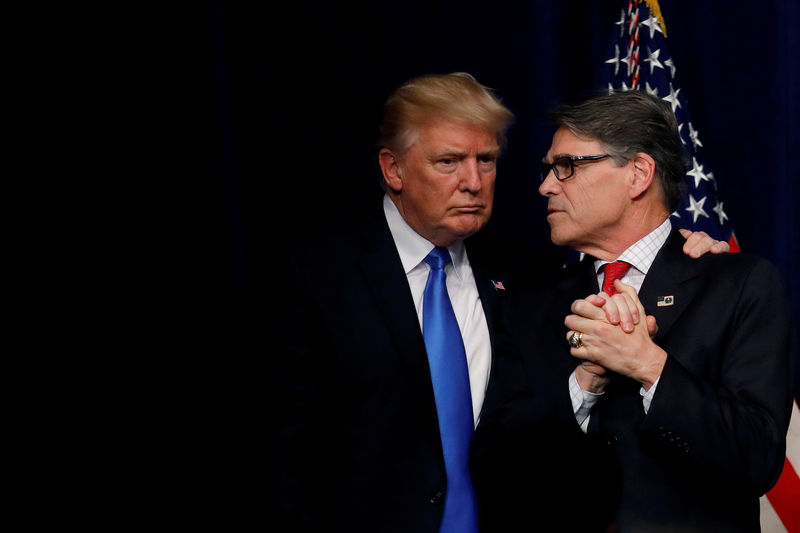By Timothy Gardner
WASHINGTON (Reuters) - The flagship of the Trump administration's advanced nuclear power research program could cost about 40 percent more than a government official estimated earlier this year, a U.S. Department of Energy document shows.
Energy Secretary Rick Perry has tried to breathe life into the country's nuclear power industry, which is suffering in the face of competition from plants burning cheap natural gas as well as falling costs for wind and solar power.
Perry announced the versatile test reactor, or VTR, in late February, saying it was a "key step to implementing President (Donald) Trump's direction to revitalize and expand the U.S. nuclear industry," and critical for national security.
The VTR would let U.S. companies conduct advanced technology and fuels tests without having to go to competitors in Russia and China, Perry said. Meant to be built by late 2025, it would be the first new nuclear test reactor built by the Energy Department, or DOE, in many decades.
Perry did not put a price on the reactor, which would be led by the department's Idaho National Laboratory. But an internal DOE document dated Jan. 22, obtained by public policy group the Union of Concerned Scientists (UCS) through a freedom of information request, puts the estimated cost for construction and starting the VTR at $3.9 billion to $6 billion. The document, seen by Reuters on Thursday, had not been reported previously.
The high end of that range is about 40 percent more than an estimate by Kemal Pasamehmetoglu, the head of the Idaho National Laboratory's VTR program, who was quoted in the Morning Consult news outlet in February saying it would cost up to $3.5 billion in today's dollars. The calculation of the jump in the cost is affected by the Energy Department's estimate which included cost escalations of up to 3.8 percent annually.
The UCS estimated that VTR's cost for the next seven years would be about $550 million to $850 million annually, compared to the $740 million appropriated in the fiscal year 2019 budget for the department's entire advanced nuclear technology development, which contained just $65 million for VTR.
If successful, the VTR is meant to lead to a new wave of so-called fast reactors, reviving nuclear power companies. Fast reactors breed their own fuel, unlike today's fleet of light water reactors. They also have a safety benefit of allowing a plant to operate under low pressure conditions.
But critics worry that the fuel cycle of fast reactors will likely depend on the reprocessing or recycling of plutonium or uranium, both of which can be used as fissile materials for nuclear weapons.
"Fast reactors are less safe, less secure, and more proliferation-prone than light-water reactors," said Ed Lyman, a senior scientist at UCS. "The DOE should not be asking taxpayers to spend billions on this dangerous reactor."
Lyman also said cheaper approaches for testing to support fast reactor development could be done at Oak Ridge National Laboratory, the DOE-sponsored research and development center in Tennessee.
The DOE did not immediately respond to a request for comment.
VTR has already led to business for nuclear companies. In November, the Idaho lab said it had contracted GE Hitachi Nuclear, a venture between General Electric (NYSE:GE) Co and Hitachi Ltd, to support the conceptual design and safety activities for an unspecified amount.
